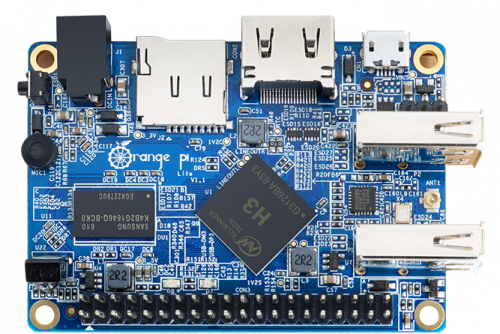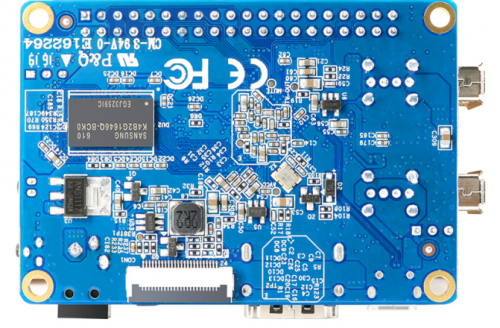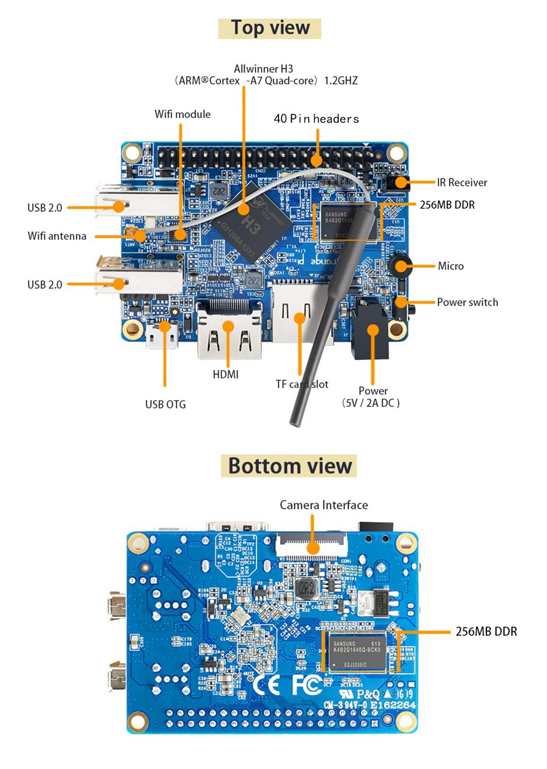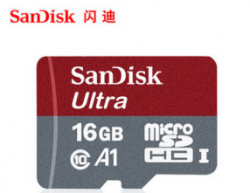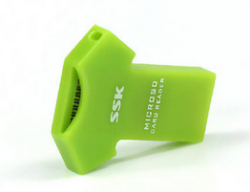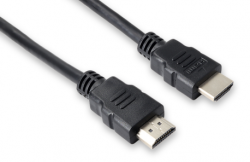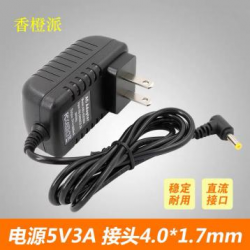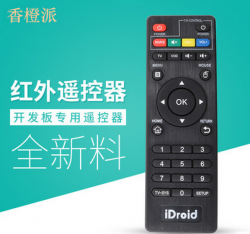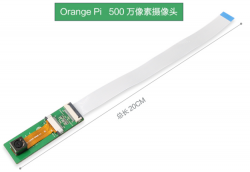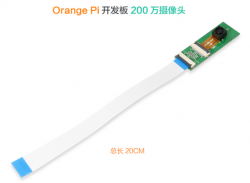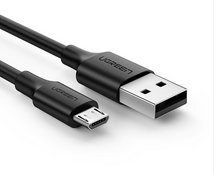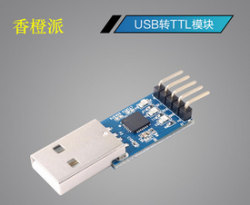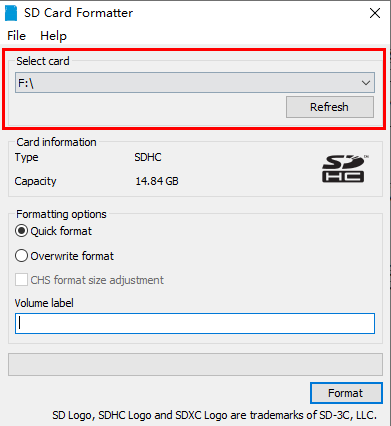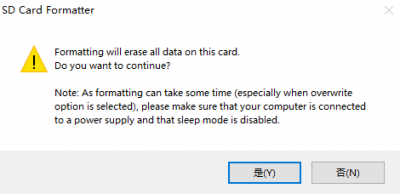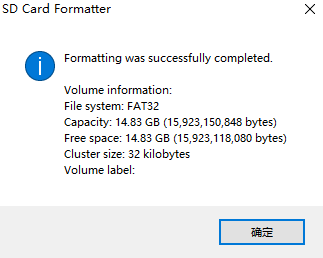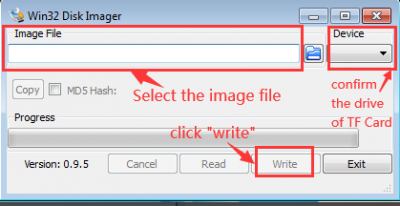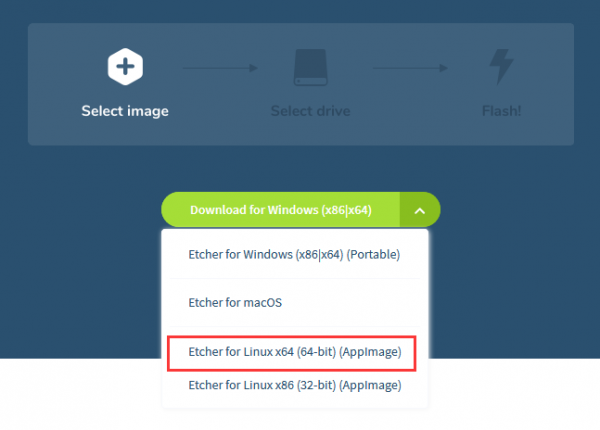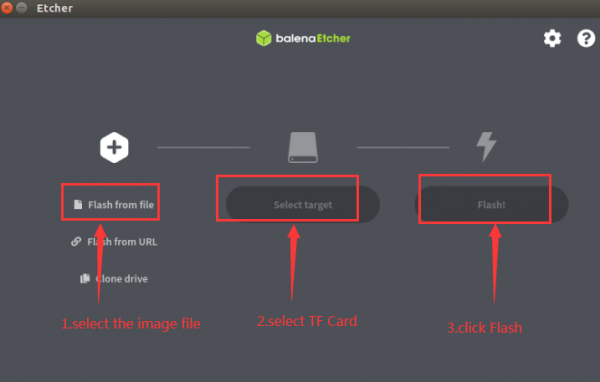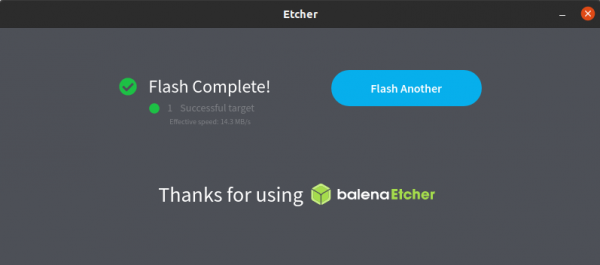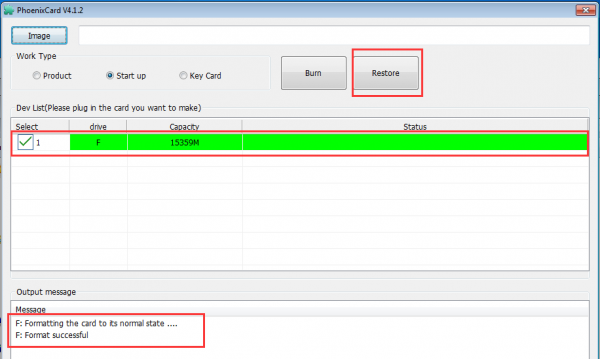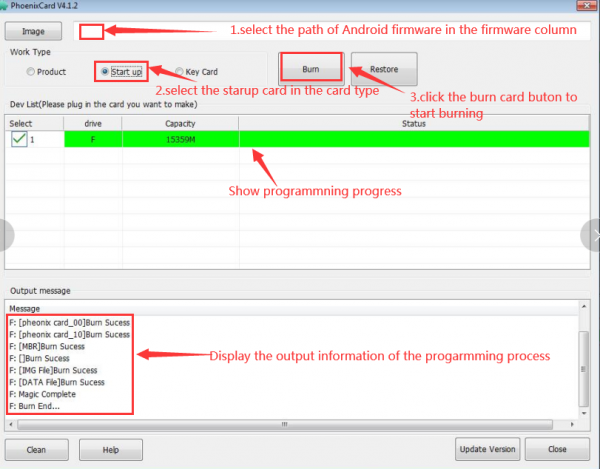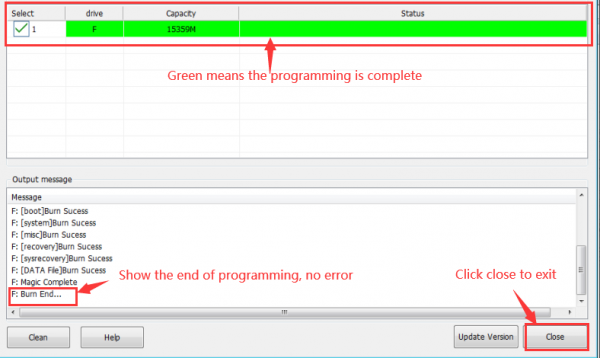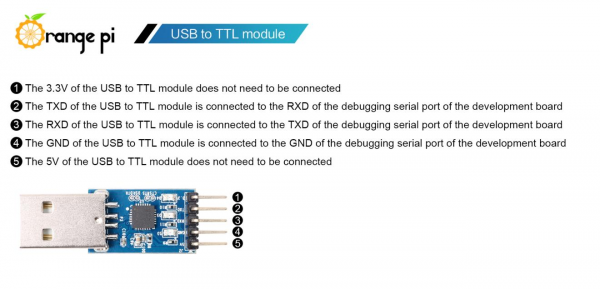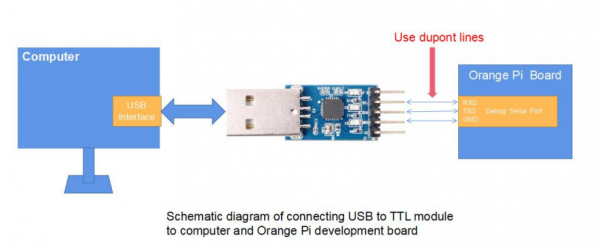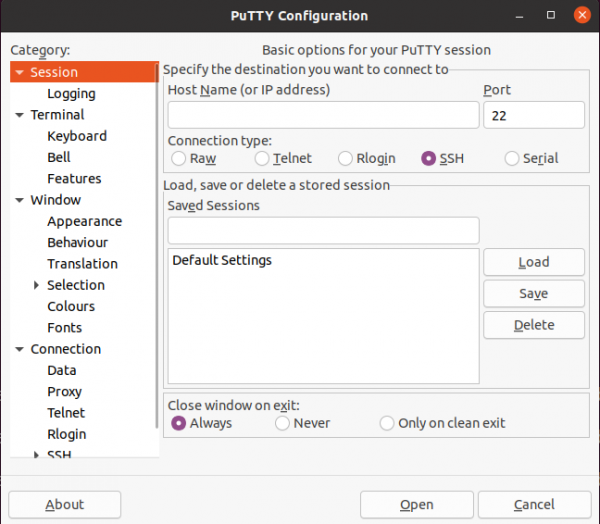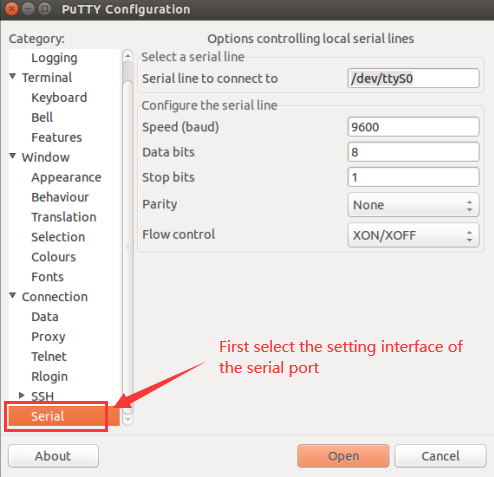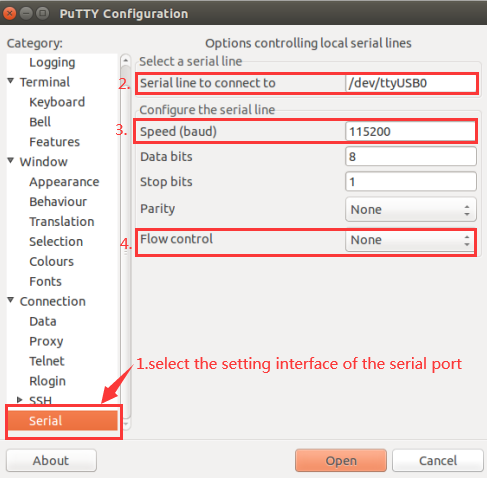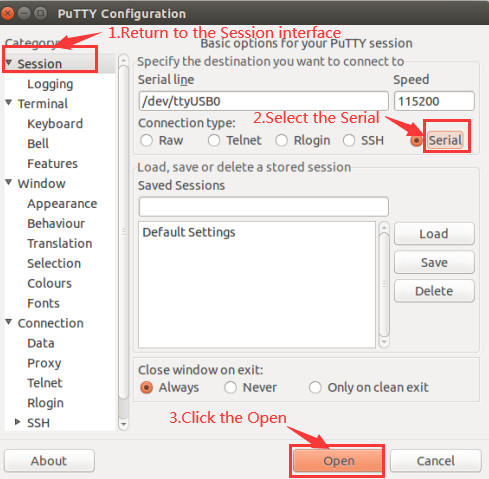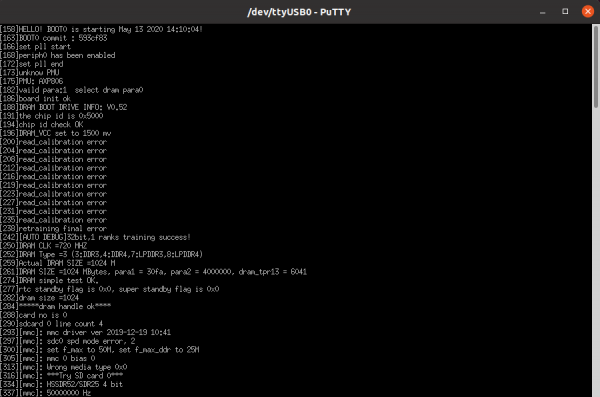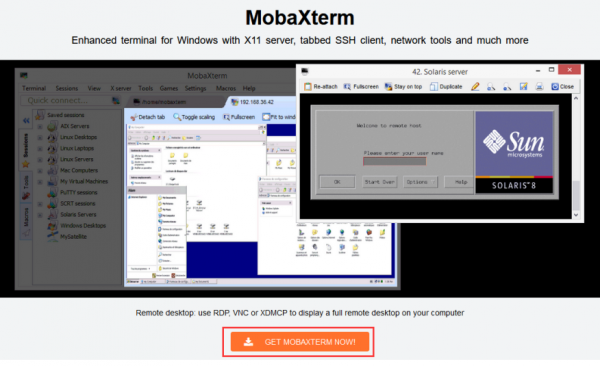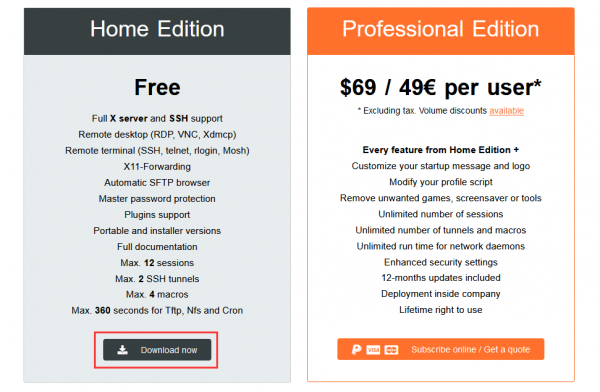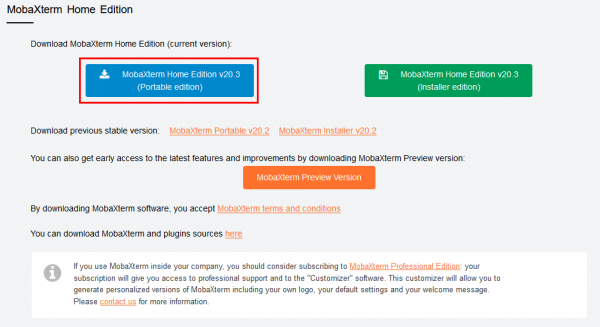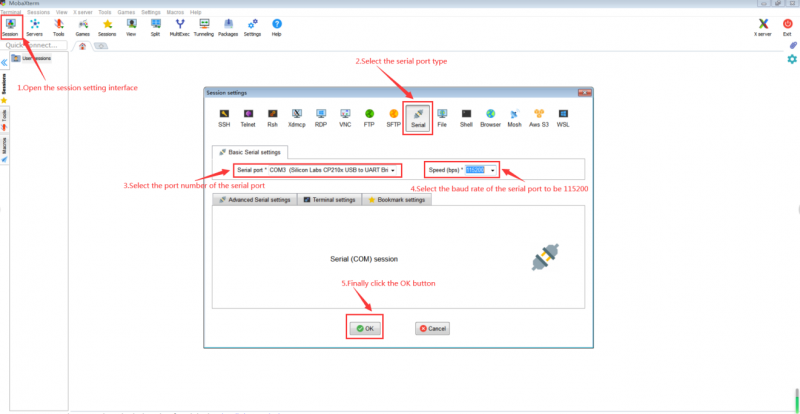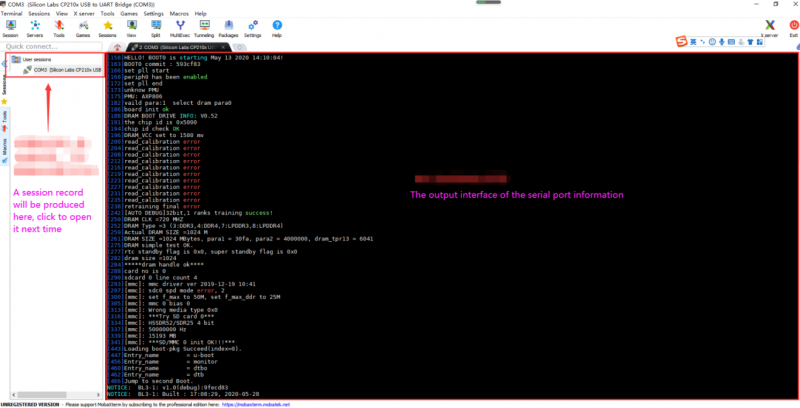Difference between revisions of "Orange Pi Lite"
(→Method of burning Linux image to TF card based on Windows PC) |
|||
| (28 intermediate revisions by the same user not shown) | |||
| Line 64: | Line 64: | ||
| Weight|| 29g | | Weight|| 29g | ||
|- | |- | ||
| − | |colspan=2|<div style="text-align:center;">[[ | + | |colspan=2|<div style="text-align:center;">[[File:Orange-pi-small-logo.png|30px|]]rangePi™ is a registered trademark of Shenzhen Xunlong Software Co., Ltd.</div> |
|} | |} | ||
| Line 71: | Line 71: | ||
'''Top View:'''<br> | '''Top View:'''<br> | ||
| − | [[ | + | [[File:Orange-pi-lite-img1.png|500px|]]<br> |
'''Bottom View:'''<br> | '''Bottom View:'''<br> | ||
| − | [[ | + | [[File:Orange-pi-lite-img2.png|500px|]]<br> |
=== '''Interface details of Orange Pi Lite''' === | === '''Interface details of Orange Pi Lite''' === | ||
<br> | <br> | ||
| − | [[ | + | [[File:Orange-pi-lite-img3.png|600px|]]<br> |
== '''Introduction to use the development board''' == | == '''Introduction to use the development board''' == | ||
=== '''Prepare the necessary accessories''' === | === '''Prepare the necessary accessories''' === | ||
1)TF card, a class 10 or higher high-speed card with a minimum capacity of 8GB, it is recommended to use SanDisk’s TF card. Orange Pi tests all with SanDisk’s TF card. Other brands of TF cards may cause the system to fail to start.<br> | 1)TF card, a class 10 or higher high-speed card with a minimum capacity of 8GB, it is recommended to use SanDisk’s TF card. Orange Pi tests all with SanDisk’s TF card. Other brands of TF cards may cause the system to fail to start.<br> | ||
| − | <div style=" | + | <div style=" ">[[File:Orange-pi-3-lts-sdcard.png|250px]]<br></div> |
2)TF card reader, used to read and write TF card<br> | 2)TF card reader, used to read and write TF card<br> | ||
| − | <div style=" | + | <div style=" ">[[File:Orange-pi-3-lts-tfcard.png|250px]]<br></div> |
3)HDMI to HDMI cable, used to connect the development board to an HDMI monitor or TV for display<br> | 3)HDMI to HDMI cable, used to connect the development board to an HDMI monitor or TV for display<br> | ||
| − | <div style=" | + | <div style=" ">[[File:Orange-pi-3-lts-hdmicable.png|250px]]<br></div> |
4)Power adapter, at least 5V/2A high-quality power adapter, note that the OTG interface of the development board cannot be used as power input<br> | 4)Power adapter, at least 5V/2A high-quality power adapter, note that the OTG interface of the development board cannot be used as power input<br> | ||
| − | <div | + | <div > |
| − | [[ | + | [[File:Orange-pi-lite-img4.png|250px]] |
</div> | </div> | ||
5)USB interface mouse and keyboard, as long as it is a standard USB interface mouse and keyboard, the mouse and keyboard can be used to control the Orange Pi development board<br> | 5)USB interface mouse and keyboard, as long as it is a standard USB interface mouse and keyboard, the mouse and keyboard can be used to control the Orange Pi development board<br> | ||
6)Infrared remote control, mainly used to control Android system | 6)Infrared remote control, mainly used to control Android system | ||
| − | <div style=" | + | <div style=" ">[[File:Orange-pi-lite-img5.png|250px]]<br></div> |
7)GC2035 or OV5640 camera kit, which can be connected to the CSI interface of the development board to display video images<br> | 7)GC2035 or OV5640 camera kit, which can be connected to the CSI interface of the development board to display video images<br> | ||
<div> | <div> | ||
| − | [[ | + | [[File:Orange-pi-lite-img6.png|250px]] |
| − | [[ | + | [[File:Orange-pi-lite-img7.png|250px]] |
</div> | </div> | ||
<br> | <br> | ||
8)The data cable of the Micro USB interface, when using the ADB debugging function of the Android system, it is necessary to connect the development board and the computer through the data cable of the Micro USB interface<br> | 8)The data cable of the Micro USB interface, when using the ADB debugging function of the Android system, it is necessary to connect the development board and the computer through the data cable of the Micro USB interface<br> | ||
<br> | <br> | ||
| − | <div style=" | + | <div style=" ">[[File:Orange-pi-lite-img8.png|250px]]<br></div> |
9)USB to TTL module and DuPont cable, when using the serial port debugging function, USB to TTL module and DuPont cable are required to connect the development board and computer<br> | 9)USB to TTL module and DuPont cable, when using the serial port debugging function, USB to TTL module and DuPont cable are required to connect the development board and computer<br> | ||
<br> | <br> | ||
<div> | <div> | ||
| − | [[ | + | [[File:Orange-pi-lite-img9.png|250px]][[File:Orange-pi-lite-img10.png|250px]] |
</div> | </div> | ||
<br> | <br> | ||
| Line 130: | Line 130: | ||
<br> | <br> | ||
1)The download URL of the Chinese version is:<br> | 1)The download URL of the Chinese version is:<br> | ||
| − | http://www.orangepi.cn/ | + | http://www.orangepi.cn/html/hardWare/computerAndMicrocontrollers/service-and-support/Orange-Pi-Lite.html |
2)The download URL of the English version is:<br> | 2)The download URL of the English version is:<br> | ||
| − | http://www.orangepi.org/ | + | http://www.orangepi.org/html/hardWare/computerAndMicrocontrollers/service-and-support/Orange-Pi-Lite.html |
3)The data mainly includes<br> | 3)The data mainly includes<br> | ||
| Line 155: | Line 155: | ||
<div> | <div> | ||
| − | [[ | + | [[File:Orange-pi-lite-img11.png|800px|]] |
</div> | </div> | ||
| − | === '''Method of | + | === '''Method of burning Linux image to TF card based on Windows PC''' === |
| − | 1)First | + | <br> |
| − | + | 1)First prepare a TF card with a capacity of 8GB or more. The transmission speed of the TF card must be above class 10. It is recommended to use a TF card from a brand such as SanDisk<br> | |
| − | 2)Then use | + | <br> |
| − | + | 2)Then use the card reader to insert the TF card into the windows computer<br> | |
| + | <br> | ||
3)Then format the TF card<br> | 3)Then format the TF card<br> | ||
| − | + | <div style="padding-left:20px;"> | |
| − | a. | + | a.The '''SD Card Formatter''' software can be used to format the TF card, and its download address is<br> |
| − | + | https://www.sdcard.org/downloads/formatter/eula_windows/SDCardFormatterv5_WinEN.zip | |
| − | https://www.sdcard.org/downloads/formatter/eula_windows/SDCardFormatterv5_WinEN.zip | + | b.After downloading, unzip and install directly, and then open the software<br> |
| − | + | <br> | |
| − | b.After downloading, | + | c.If only the TF card is inserted into the computer, the drive letter of the TF card will be displayed in the '''Select card''' column. If multiple USB storage devices are inserted into the computer, you can select the drive letter corresponding to the TF card through the drop-down box<br> |
| − | + | <div style="padding-left:180px">[[File:Orange-pi-3lts-sdcardformatter.png|400px]]</div> | |
| − | c.If the | + | d.Then click '''Format''', a warning box will pop up before formatting, select '''"Yes (Y)"''' to start formatting |
| − | <div style="padding-left: | + | <div style="padding-left:180px">[[File:Orange-pi-3lts-sdcardformatter1.png|400px]]</div> |
| − | d.Then click ''' | + | e.After formatting the TF card, the information shown in the figure below will pop up, click OK.<br> |
| − | <div style="padding-left: | + | <div style="padding-left:180px">[[File:Orange-pi-3lts-sdcardformatter2.png|400px]]</div> |
| − | e.After formatting the TF card, the | + | </div> |
| − | <div style="padding-left: | + | 4)Download the compressed package of the Linux operating system image file you want to burn from the data download page of Orange Pi, and then use the decompression software to decompress it. In the decompressed file, the file ending with '''".img"''' is the image file of the operating system. The size is generally more than 1GB<br> |
| − | 4)Download the Linux operating system image file | + | <br> |
| − | 5)Use Win32Diskimager to burn Linux image to TF card<br> | + | 5)Use '''Win32Diskimager''' to burn Linux image to TF card<br> |
| − | + | <div style="padding-left:20px;"> | |
a.The download page of Win32Diskimager is<br> | a.The download page of Win32Diskimager is<br> | ||
| − | http://sourceforge.net/projects/win32diskimager/files/Archive/ | + | http://sourceforge.net/projects/win32diskimager/files/Archive/ |
| − | b. | + | b.After downloading, install it directly. The Win32Diskimager interface is as follows<br> |
| − | a) First select the path of the image file<br> | + | <p style="padding-left:20px;"> |
| + | a)First select the path of the image file<br> | ||
| + | b)Then confirm that the drive letter of the TF card is the same as that displayed in the '''"Device"''' column<br> | ||
| + | c)Finally click '''"Write"''' to start burning | ||
| + | </p> | ||
| + | <div style="padding-left:180px">[[File:Orange-pi-3lts-selectimage.png|400px]]</div> | ||
| + | c.After the image writing is completed, click the "Exit" button to exit, and then you can pull out the TF card and insert it into the development board to start | ||
| + | </div> | ||
| − | + | === '''Method of burning Linux image to TF card based on Ubuntu PC''' === | |
| − | + | <br> | |
| − | + | 1)First prepare a TF card with a capacity of 8GB or more. The transmission speed of the TF card must be above class 10. It is recommended to use a TF card from a brand such as SanDisk<br> | |
| − | + | <br> | |
| − | |||
| − | === '''Method of | ||
| − | 1)First | ||
2)Then use a card reader to insert the TF card into the computer<br> | 2)Then use a card reader to insert the TF card into the computer<br> | ||
| + | <br> | ||
3)Download balenaEtcher software, the download address is<br> | 3)Download balenaEtcher software, the download address is<br> | ||
https://www.balena.io/etcher/ | https://www.balena.io/etcher/ | ||
4)After entering the balenaEtcher download page, please select the Linux version of the software through the drop-down box to download<br> | 4)After entering the balenaEtcher download page, please select the Linux version of the software through the drop-down box to download<br> | ||
| − | <div style=" | + | <br> |
| − | 5)After downloading, use '''unzip ''' to decompress. The decompressed '''balenaEtcher-1.5.109-x64.AppImage''' is the software | + | <div style=" ">[[File:Orange-pi-3lts-selectlinuxversion.png|600px]]</div> |
| + | <br> | ||
| + | 5)After downloading, use '''unzip ''' to decompress. The decompressed '''balenaEtcher-1.5.109-x64.AppImage''' is the software required for burning | ||
<div style="background:#f1f1f1;border: 1px solid #000;"> | <div style="background:#f1f1f1;border: 1px solid #000;"> | ||
test@test:~$ unzip balena-etcher-electron-1.5.109-linux-x64.zip <br> | test@test:~$ unzip balena-etcher-electron-1.5.109-linux-x64.zip <br> | ||
| Line 205: | Line 213: | ||
balenaEtcher-1.5.109-x64.AppImage balena-etcher-electron-1.5.109-linux-x64.zip | balenaEtcher-1.5.109-x64.AppImage balena-etcher-electron-1.5.109-linux-x64.zip | ||
</div> | </div> | ||
| − | 6)Download the Linux operating system image file | + | <br> |
| + | 6)Download the compressed package of the Linux operating system image file you want to burn from the data download page of Orange Pi, and then use the decompression software to decompress it. In the decompressed file, the file ending with ".img" is the image file of the operating system. The size is generally more than 1GB<br> | ||
a.The decompression command of the compressed package at the end of a.7z is as follows | a.The decompression command of the compressed package at the end of a.7z is as follows | ||
<div style="background:#f1f1f1;border: 1px solid #000;"> | <div style="background:#f1f1f1;border: 1px solid #000;"> | ||
| − | test@test:~$ 7z x | + | test@test:~$ 7z x image_filename.7z |
| − | |||
| − | |||
| − | |||
| − | |||
</div> | </div> | ||
| − | + | b.The decompression command for the compressed package ending with b.tar.gz is as follows | |
<div style="background:#f1f1f1;border: 1px solid #000;"> | <div style="background:#f1f1f1;border: 1px solid #000;"> | ||
| − | test@test:~$ | + | test@test:~$ tar -zxf image_filename.tar.gz |
| − | + | </div> | |
| + | <br> | ||
| + | 7)Double-click balenaEtcher-1.5.109-x64.AppImage on the graphical interface of Ubuntu PC to open balenaEtcher. The opened interface is shown in the figure below<br> | ||
| + | <div style="padding-left:20px;"> | ||
| + | a.First select the path of the image file<br> | ||
| + | b.Then select the device number of the TF card<br> | ||
| + | c.Finally click Flash to start burning | ||
</div> | </div> | ||
| − | 8) | + | <div style=" ">[[File:Orange-pi-3lts-balenaetcher.png|600px]]</div> |
| − | + | 8)The burning process will prompt the writing speed and remaining time | |
| + | <div style=" ">[[File:Orange-pi-3lts-balenaetcher1.png|600px]]</div> | ||
| + | 9)After burning, the following interface will be displayed. At this time, you can pull out the TF card from the computer and insert it into the development board to start. | ||
| + | <div style=" ">[[File:Orange-pi-3lts-balenaetcher2.png|600px]]</div> | ||
| − | |||
| − | |||
| − | |||
| − | |||
| − | |||
| − | |||
| − | |||
| − | |||
| − | |||
| − | |||
| − | |||
=== '''How to burn Android firmware to TF card''' === | === '''How to burn Android firmware to TF card''' === | ||
| − | Android image can only be burned to TF card using PhoenixCard software under Windows platform, but cannot be burned under Linux platform<br> | + | <br> |
| − | + | <span style="color:red;font-weight:700;">Android image can only be burned to TF card using PhoenixCard software under Windows platform, but cannot be burned under Linux platform</span><br> | |
| − | 1)First | + | <br> |
| − | + | 1)First prepare a TF card with a capacity of 8GB or more. The transmission speed of the TF card must be above class 10. It is recommended to use a TF card from a brand such as SanDisk<br> | |
| + | <br> | ||
2)Then use a card reader to insert the TF card into the computer<br> | 2)Then use a card reader to insert the TF card into the computer<br> | ||
| − | + | <br> | |
| − | 3)Download Android | + | 3)Download the Android 4.4 or Android 7.0 firmware and PhoenixCard programming tool from Orange Pi's data download page, please make sure that the version of the PhonenixCrad tool is PhoenixCard v4.1.2<br> |
| − | + | <br> | |
| − | 4)Use the decompression software to decompress | + | 4)Use the decompression software to decompress the downloaded Android firmware compressed package. In the decompressed file, the file ending with ".img" is the Android firmware<br> |
| − | + | <br> | |
| − | 5)Use decompression software to decompress PhoenixCard v4.1.2.rar, this software does not need to be installed, | + | 5)Use the decompression software to decompress PhoenixCard v4.1.2.rar, this software does not need to be installed, just find PhoenixCard in the decompressed folder and open it |
| − | <div style=" | + | <div style=" ">[[File:Orange-pi-3lts-phoenixcard.png|600px]]</div> |
| − | 6)After opening PhoenixCard, if the TF card is recognized normally, the drive letter and capacity of the TF card will be displayed in the middle list. Please make sure that the displayed drive letter is | + | <br> |
| − | <div style=" | + | 6)After opening '''PhoenixCard''', if the TF card is recognized normally, the drive letter and capacity of the TF card will be displayed in the middle list.<span style="color:red;font-weight:700;"> Please make sure that the displayed drive letter is the same as the drive letter of the TF card you want to burn.</span> If There is no display, you can try to unplug the TF card<br> |
| − | 7)After confirming the drive letter, format the TF card | + | <div style=" ">[[File:Orange-pi-3lts-phoenixcard1.png|600px]]</div> |
| − | <div style=" | + | 7)After confirming the drive letter, first format the TF card, click the recovery card button in PhoenixCard, or use the '''SD Card Formatter''' mentioned above to format the TF card<br> |
| + | <div style=" ">[[File:Orange-pi-3lts-phoenixcard2.png|600px]]</div> | ||
8)Then start to write the Android firmware to the TF card<br> | 8)Then start to write the Android firmware to the TF card<br> | ||
| − | + | <div style="padding-left:20px;"> | |
| − | + | a.First select the path of the Android '''firmware''' in the firmware column<br> | |
| − | + | b.Select '''boot card''' in the type of card to make<br> | |
| − | + | c.Then click the '''burn card''' button to start burning | |
| − | + | </div> | |
| − | + | <div style=" ">[[File:Orange-pi-3lts-phoenixcard3.png|600px]]</div> | |
| − | + | 9) After burning, the display of PhoenixCard is as shown in the figure below. At this time, click the close button to exit PhoenixCard, and then you can pull out the TF card from the computer and insert it into the development board to start. | |
| − | <div style="padding-left | + | <div style=" ">[[File:Orange-pi-3lts-phoenixcard4.png|600px]]</div> |
| − | |||
| − | |||
| − | |||
| − | |||
| − | a. First | ||
| − | |||
| − | |||
| − | |||
| − | |||
| − | |||
| − | |||
| − | |||
| − | |||
| − | |||
| − | |||
| − | |||
| − | |||
| − | |||
| − | |||
| − | |||
| − | b. Select ''' | ||
| − | |||
| − | c. Then click the ''' | ||
| − | <div style=" | ||
| − | |||
| − | |||
| − | |||
| − | |||
| − | |||
| − | <div style=" | ||
| − | |||
=== ''' Start the Orange Pi development board''' === | === ''' Start the Orange Pi development board''' === | ||
| + | <br> | ||
| + | 1)Insert the burned TF card into the TF card slot of the Orange Pi development board<br> | ||
| + | 2)The development board has an HDMI interface, and the development board can be connected to a TV or other HDMI display through an HDMI cable<br> | ||
| + | 3)Connect the USB mouse and keyboard to control the orange pi development board<br> | ||
| + | 4)Connect a power adapter with 5V and at least 2A (3A is also possible)<br> | ||
| + | <div style="padding-left:20px;color:red;font-weight:700;"> | ||
| + | a.Remember not to plug in the 12V power adapter, if the 12V power adapter is plugged in, it will burn out the development board<br> | ||
| + | b.Many unstable phenomena during system power-on and startup are basically caused by power supply problems, so a reliable power adapter is very important | ||
| + | </div> | ||
| + | 5)Then turn on the switch of the power adapter, if everything is normal, then the HDMI display can see the startup screen of the system<br> | ||
| + | 6)If you want to view the output information of the system through the debugging serial port, please use the serial port cable to connect the development board to the computer. For the serial port connection method, please refer to the section on debugging serial port usage.<br> | ||
| − | + | === '''How to debug the serial port''' === | |
| − | |||
| − | |||
| − | |||
| − | |||
| − | |||
| − | |||
| − | |||
| − | |||
| − | |||
| − | |||
| − | |||
| − | |||
| − | |||
| − | |||
| − | + | ==== '''Connection instructions for debugging serial port''' ==== | |
| − | + | 1)First, you need to prepare a USB to TTL module. This module can be purchased in Orange Pi's store. If there are other similar USB to TTL modules, then insert the USB end of the USB to TTL module into the USB interface of the computer. middle | |
| − | + | <div style=" ">[[File:Orange-pi-3lts-ttlmodule.png|600px]]</div> | |
| − | + | 2)The corresponding relationship between the debug serial port GND, TXD and RXD pins of the development board is shown in the figure below | |
| − | + | <div style=" ">[[File:Orange-pi-lite-img13.png|600px]]</div> | |
| − | + | 3)The GND, TXD and RXD pins of the USB to TTL module need to be connected to the debug serial port of the development board through a DuPont cable<br> | |
| − | |||
| − | === ''' | ||
| − | |||
| − | 1)First, you need to prepare a | ||
| − | <div style=" | ||
| − | 2)The corresponding relationship between the debug serial port GND, | ||
| − | <div style=" | ||
| − | 3)The GND, | ||
<div style="padding-left:20px"> | <div style="padding-left:20px"> | ||
| − | a. Connect the GND of the USB to TTL module to the GND of the development board<br> | + | a.Connect the GND of the USB to TTL module to the GND of the development board<br> |
| − | + | b.The RXD of the USB to TTL module is connected to the TXD of the development board <br> | |
| − | b. | + | c.The TXD of the USB to TTL module is connected to the RXD of the development board |
| − | |||
| − | c. | ||
</div> | </div> | ||
| + | <br> | ||
4)The schematic diagram of connecting the USB to TTL module to the computer and the Orange Pi development board is shown below | 4)The schematic diagram of connecting the USB to TTL module to the computer and the Orange Pi development board is shown below | ||
| − | <div style=" | + | <div style=" ">[[File:Orange-pi-3lts-ttlmodule2.png|600px]]</div> |
| − | === '''How to use the | + | |
| − | 1)If the USB to TTL module is connected normally, you can see the corresponding device node name under /dev of Ubuntu PC, remember this node name, | + | ==== '''How to use the debugging serial port on Ubuntu platform''' ==== |
| + | 1)If the USB to TTL module is connected normally, you can see the corresponding device node name under /dev of the Ubuntu PC, remember this node name, it will be used when setting the serial port software later | ||
<div style="background:#f1f1f1;border:1px solid #000"> | <div style="background:#f1f1f1;border:1px solid #000"> | ||
test@test:~$ '''ls /dev/ttyUSB*'''<br> | test@test:~$ '''ls /dev/ttyUSB*'''<br> | ||
/dev/ttyUSB0 | /dev/ttyUSB0 | ||
</div> | </div> | ||
| − | 2)There are many serial debugging | + | <br> |
| + | 2)There are many serial debugging tools that can be used under linux, such as putty, minicom, etc. The following demonstrates how to use putty<br> | ||
| + | <br> | ||
3)First install putty on the Ubuntu PC | 3)First install putty on the Ubuntu PC | ||
<div style="background:#f1f1f1;border:1px solid #000"> | <div style="background:#f1f1f1;border:1px solid #000"> | ||
| Line 344: | Line 309: | ||
test@test:~$ '''sudo apt -y install putty''' | test@test:~$ '''sudo apt -y install putty''' | ||
</div> | </div> | ||
| + | <br> | ||
4)Then run putty, remember to add sudo permissions | 4)Then run putty, remember to add sudo permissions | ||
<div style="background:#f1f1f1;border:1px solid #000"> | <div style="background:#f1f1f1;border:1px solid #000"> | ||
test@test:~$ '''sudo putty''' | test@test:~$ '''sudo putty''' | ||
</div> | </div> | ||
| + | <br> | ||
5)After executing the putty command, the following interface will pop up | 5)After executing the putty command, the following interface will pop up | ||
| − | <div style=" | + | <div style=" ">[[File:Orange-pi-3lts-putty.png|600px]]</div> |
| + | <br> | ||
6)First select the setting interface of the serial port | 6)First select the setting interface of the serial port | ||
| − | <div style=" | + | <div style=" ">[[File:Orange-pi-3lts-putty1.png|600px]]</div> |
7)Then set the parameters of the serial port<br> | 7)Then set the parameters of the serial port<br> | ||
| − | |||
<div style="padding-left:20px;"> | <div style="padding-left:20px;"> | ||
a. Set the Serial line to connect to to /dev/ttyUSB0 (modify to the corresponding node name, generally /dev/ttyUSB0)<br> | a. Set the Serial line to connect to to /dev/ttyUSB0 (modify to the corresponding node name, generally /dev/ttyUSB0)<br> | ||
| − | |||
b. Set Speed (baud) to 115200 (baud rate of the serial port)<br> | b. Set Speed (baud) to 115200 (baud rate of the serial port)<br> | ||
| − | |||
c. Set Flow control to None | c. Set Flow control to None | ||
</div> | </div> | ||
| − | <div style=" | + | <div style=" ">[[File:Orange-pi-3lts-putty2.png|600px]]</div> |
8)After setting the serial port setting interface, return to the Session interface | 8)After setting the serial port setting interface, return to the Session interface | ||
| − | <div style="padding-left:20px;">a. First select the Connection type as Serial<br> | + | <div style="padding-left:20px;"> |
| − | + | a. First select the Connection type as Serial<br> | |
b. Then click the Open button to connect to the serial port</div> | b. Then click the Open button to connect to the serial port</div> | ||
| − | <div style=" | + | <div style=" ">[[File:Orange-pi-3lts-putty3.png|600px]]</div> |
| + | <br> | ||
9)After starting the development board, you can see the Log information output by the system from the opened serial port terminal | 9)After starting the development board, you can see the Log information output by the system from the opened serial port terminal | ||
| − | <div style=" | + | <div style=" ">[[File:Orange-pi-3lts-putty4.png|600px]]</div> |
| − | === ''' How to use the | + | |
| − | 1)There are many serial debugging | + | ==== '''How to use the debugging serial port on Windows platform''' ==== |
| + | <br> | ||
| + | 1)There are many serial debugging tools that can be used under Windows, such as SecureCRT, MobaXterm, etc. The following shows how to use MobaXterm. This software is free and can be used without purchasing a serial number.<br> | ||
| + | <br> | ||
2)Download MobaXterm<br> | 2)Download MobaXterm<br> | ||
<div style="padding-left:20px;"> | <div style="padding-left:20px;"> | ||
| Line 379: | Line 348: | ||
b.After entering the MobaXterm download page, click '''GET XOBATERM NOW!''' | b.After entering the MobaXterm download page, click '''GET XOBATERM NOW!''' | ||
</div> | </div> | ||
| − | <div style=" | + | <div style=" ">[[File:Orange-pi-3lts-mobaxterm.png|600px]]</div> |
| − | + | <br> | |
<div style="padding-left:20px;"> | <div style="padding-left:20px;"> | ||
c.Then choose to download the Home version | c.Then choose to download the Home version | ||
</div> | </div> | ||
| − | <div style=" | + | <div style=" ">[[File:Orange-pi-3lts-homeversion.png|600px]]</div> |
<div style="padding-left:20px;"> | <div style="padding-left:20px;"> | ||
d.Then select the Portable version, after downloading, you don’t need to install it, just open it and you can use it | d.Then select the Portable version, after downloading, you don’t need to install it, just open it and you can use it | ||
</div> | </div> | ||
| − | <div style=" | + | <div style=" ">[[File:Orange-pi-3lts-mobaxterm1.png|600px]]</div> |
3)After downloading, use the decompression software to decompress the downloaded compressed package, you can get the executable software of MobaXterm, and then double-click to open it | 3)After downloading, use the decompression software to decompress the downloaded compressed package, you can get the executable software of MobaXterm, and then double-click to open it | ||
| − | <div style=" | + | <div style=" ">[[File:Orange-pi-3lts-mobaxterm2.png|600px]]</div> |
4)After opening the software, the steps to set up the serial port connection are as follows<br> | 4)After opening the software, the steps to set up the serial port connection are as follows<br> | ||
<div style="padding-left:20px;"> | <div style="padding-left:20px;"> | ||
a. Open the session setting interface<br> | a. Open the session setting interface<br> | ||
| − | |||
b. Select the serial port type<br> | b. Select the serial port type<br> | ||
| − | |||
c. Select the port number of the serial port (choose the corresponding port number according to the actual situation), if you can't see the port number, please use the <span style="color:#003aff">360 driver master</span> to scan and install the USB to TTL serial chip driver<br> | c. Select the port number of the serial port (choose the corresponding port number according to the actual situation), if you can't see the port number, please use the <span style="color:#003aff">360 driver master</span> to scan and install the USB to TTL serial chip driver<br> | ||
| − | |||
d. Select the baud rate of the serial port to be 115200<br> | d. Select the baud rate of the serial port to be 115200<br> | ||
| − | |||
e. Finally click the '''"OK"''' button to complete the setting | e. Finally click the '''"OK"''' button to complete the setting | ||
</div> | </div> | ||
| − | <div style=" | + | <div style=" ">[[File:Orange-pi-3lts-setupserialport.png|800px]]</div> |
5)After clicking the '''"OK"''' button, you will enter the following interface, and you can see the output information of the serial port when you start the development board. | 5)After clicking the '''"OK"''' button, you will enter the following interface, and you can see the output information of the serial port when you start the development board. | ||
| − | <div style=" | + | <div style=" ">[[File:Orange-pi-3lts-setupserialportok.png|800px]]</div> |
| − | For more information on using the Orange Pi | + | <br> |
| + | == '''Download the Orange Pi Lite User Manual''' == | ||
| + | <br> | ||
| + | For more information on using the Orange Pi Lite, please see the [https://drive.google.com/open?id=1ba5k1C0iGj7oHfQnCGAz2lgm7Vn30FPk <span style="color:#ff003a;">Orange Pi Lite User Manual</span>]. (Click to download) | ||
Latest revision as of 11:01, 1 July 2022
Contents
- 1 Basic Features of Orange Pi Lite
- 2 Introduction to use the development board
- 2.1 Prepare the necessary accessories
- 2.2 Download the image of the development board and related sources
- 2.3 Method of burning Linux image to TF card based on Windows PC
- 2.4 Method of burning Linux image to TF card based on Ubuntu PC
- 2.5 How to burn Android firmware to TF card
- 2.6 Start the Orange Pi development board
- 2.7 How to debug the serial port
- 3 Download the Orange Pi Lite User Manual
Basic Features of Orange Pi Lite
What is Orange Pi Lite ?
Orange Pi Lite is an open source single-board card computer, a new generation of arm development boards, which can run Android 4.4, Android7.0, Ubuntu and Debian and other operating systems. The Orange Pi Lite uses the Allwinner H3 SoC and has 512MB DDR3 memory
Purpose of Orange Pi Lite
We can use it to build:
- A computer
- A wireless network server
- Game console
- Music player
- HD Video Player
- Speaker
- Android
Of course there are many more features as Orange Pi is open source.
Who is Orange Pi Lite designed for?
The Orange Pi development board is not just a consumer product, it is designed for anyone who wants to use technology to create and innovate. It's a very simple, fun, and useful tool that you can use to shape the world around you
Hardware features of Orange Pi Lite
| Hardware Features Introduction
| |
| CPU | Allwinner H3 ARM Cortex-A7 Quad Core |
| GPU |
Mali400MP2 GPU @600MHz |
| RAM | 512MB GB DDR3 (shared with GPU) |
| Onboard Storage | TF card slot (up to 32GB) |
| Onboard Network | WIFI onboard network |
| video input | CSI interface camera |
| audio input | MIC |
| Video Output | HDMI |
| Audio output | HDMI |
| power supply | DC input, MicroUSB (OTG) cannot be used as power input |
| USB 2.0 port | 2 USB 2.0 HOST, 1 USB 2.0 OTG |
| Low-level peripherals | 40 pin connector, compatible with Raspberry Pi |
| Debug serial port | UART-TX,UART-RX,GND |
| LED lights | Power indicator and status indicator |
| button | Power (SW4) |
| Infrared reception | Support infrared remote control |
| Supported Operating Systems | Android, Ubuntu, Debian and other operating systems |
Appearance specification introduction
| |
| Product Size | 85mm×56mm |
| Weight | 29g |
Top view and bottom view of Orange Pi Lite
Interface details of Orange Pi Lite
Introduction to use the development board
Prepare the necessary accessories
1)TF card, a class 10 or higher high-speed card with a minimum capacity of 8GB, it is recommended to use SanDisk’s TF card. Orange Pi tests all with SanDisk’s TF card. Other brands of TF cards may cause the system to fail to start.
2)TF card reader, used to read and write TF card
3)HDMI to HDMI cable, used to connect the development board to an HDMI monitor or TV for display
4)Power adapter, at least 5V/2A high-quality power adapter, note that the OTG interface of the development board cannot be used as power input
5)USB interface mouse and keyboard, as long as it is a standard USB interface mouse and keyboard, the mouse and keyboard can be used to control the Orange Pi development board
6)Infrared remote control, mainly used to control Android system
7)GC2035 or OV5640 camera kit, which can be connected to the CSI interface of the development board to display video images
8)The data cable of the Micro USB interface, when using the ADB debugging function of the Android system, it is necessary to connect the development board and the computer through the data cable of the Micro USB interface
9)USB to TTL module and DuPont cable, when using the serial port debugging function, USB to TTL module and DuPont cable are required to connect the development board and computer
10)A PC with Ubuntu and Windows operating systems installed
| 1 | Ubuntu14.04 PC | Optional, used to compile Android source code |
| 2 | Ubuntu18.04 PC | Optional, used to compile Linux source code |
| 3 | Windows PC | For burning Android and Linux images |
1)The download URL of the Chinese version is:
http://www.orangepi.cn/html/hardWare/computerAndMicrocontrollers/service-and-support/Orange-Pi-Lite.html
2)The download URL of the English version is:
http://www.orangepi.org/html/hardWare/computerAndMicrocontrollers/service-and-support/Orange-Pi-Lite.html
3)The data mainly includes
a. Android source code: Save on Google drive
b.Linux source code: Save on github, the link address is
https://github.com/orangepi-xunlong
c.User Manual and Schematics:chip-related data manuals will also be placed here
d. Official tools: It mainly includes the software that needs to be used during the use of the development board
e. Android image: Save on Google drive
f. Ubuntu image: Save on Google drive
g. Debian image: Save on Google drive
h.Armbian Image, image developed by the Armbian community. If you encounter problems during use, please go to the armbian forum to give feedback. The maintainers of the Armbian image and other people who use the Armbian image will assist in solving various problems, which is also the fastest way to solve the problem. method. Orange Pi is not responsible for maintaining this image
Method of burning Linux image to TF card based on Windows PC
1)First prepare a TF card with a capacity of 8GB or more. The transmission speed of the TF card must be above class 10. It is recommended to use a TF card from a brand such as SanDisk
2)Then use the card reader to insert the TF card into the windows computer
3)Then format the TF card
a.The SD Card Formatter software can be used to format the TF card, and its download address is
https://www.sdcard.org/downloads/formatter/eula_windows/SDCardFormatterv5_WinEN.zip
b.After downloading, unzip and install directly, and then open the software
c.If only the TF card is inserted into the computer, the drive letter of the TF card will be displayed in the Select card column. If multiple USB storage devices are inserted into the computer, you can select the drive letter corresponding to the TF card through the drop-down box
d.Then click Format, a warning box will pop up before formatting, select "Yes (Y)" to start formatting
e.After formatting the TF card, the information shown in the figure below will pop up, click OK.
4)Download the compressed package of the Linux operating system image file you want to burn from the data download page of Orange Pi, and then use the decompression software to decompress it. In the decompressed file, the file ending with ".img" is the image file of the operating system. The size is generally more than 1GB
5)Use Win32Diskimager to burn Linux image to TF card
a.The download page of Win32Diskimager is
http://sourceforge.net/projects/win32diskimager/files/Archive/
b.After downloading, install it directly. The Win32Diskimager interface is as follows
a)First select the path of the image file
b)Then confirm that the drive letter of the TF card is the same as that displayed in the "Device" column
c)Finally click "Write" to start burning
c.After the image writing is completed, click the "Exit" button to exit, and then you can pull out the TF card and insert it into the development board to start
Method of burning Linux image to TF card based on Ubuntu PC
1)First prepare a TF card with a capacity of 8GB or more. The transmission speed of the TF card must be above class 10. It is recommended to use a TF card from a brand such as SanDisk
2)Then use a card reader to insert the TF card into the computer
3)Download balenaEtcher software, the download address is
https://www.balena.io/etcher/
4)After entering the balenaEtcher download page, please select the Linux version of the software through the drop-down box to download
5)After downloading, use unzip to decompress. The decompressed balenaEtcher-1.5.109-x64.AppImage is the software required for burning
test@test:~$ unzip balena-etcher-electron-1.5.109-linux-x64.zip
Archive: balena-etcher-electron-1.5.109-linux-x64.zip
inflating: balenaEtcher-1.5.109-x64.AppImage
test@test:~$ ls
balenaEtcher-1.5.109-x64.AppImage balena-etcher-electron-1.5.109-linux-x64.zip
6)Download the compressed package of the Linux operating system image file you want to burn from the data download page of Orange Pi, and then use the decompression software to decompress it. In the decompressed file, the file ending with ".img" is the image file of the operating system. The size is generally more than 1GB
a.The decompression command of the compressed package at the end of a.7z is as follows
test@test:~$ 7z x image_filename.7z
b.The decompression command for the compressed package ending with b.tar.gz is as follows
test@test:~$ tar -zxf image_filename.tar.gz
7)Double-click balenaEtcher-1.5.109-x64.AppImage on the graphical interface of Ubuntu PC to open balenaEtcher. The opened interface is shown in the figure below
a.First select the path of the image file
b.Then select the device number of the TF card
c.Finally click Flash to start burning
8)The burning process will prompt the writing speed and remaining time
9)After burning, the following interface will be displayed. At this time, you can pull out the TF card from the computer and insert it into the development board to start.
How to burn Android firmware to TF card
Android image can only be burned to TF card using PhoenixCard software under Windows platform, but cannot be burned under Linux platform
1)First prepare a TF card with a capacity of 8GB or more. The transmission speed of the TF card must be above class 10. It is recommended to use a TF card from a brand such as SanDisk
2)Then use a card reader to insert the TF card into the computer
3)Download the Android 4.4 or Android 7.0 firmware and PhoenixCard programming tool from Orange Pi's data download page, please make sure that the version of the PhonenixCrad tool is PhoenixCard v4.1.2
4)Use the decompression software to decompress the downloaded Android firmware compressed package. In the decompressed file, the file ending with ".img" is the Android firmware
5)Use the decompression software to decompress PhoenixCard v4.1.2.rar, this software does not need to be installed, just find PhoenixCard in the decompressed folder and open it
6)After opening PhoenixCard, if the TF card is recognized normally, the drive letter and capacity of the TF card will be displayed in the middle list. Please make sure that the displayed drive letter is the same as the drive letter of the TF card you want to burn. If There is no display, you can try to unplug the TF card
7)After confirming the drive letter, first format the TF card, click the recovery card button in PhoenixCard, or use the SD Card Formatter mentioned above to format the TF card
8)Then start to write the Android firmware to the TF card
a.First select the path of the Android firmware in the firmware column
b.Select boot card in the type of card to make
c.Then click the burn card button to start burning
9) After burning, the display of PhoenixCard is as shown in the figure below. At this time, click the close button to exit PhoenixCard, and then you can pull out the TF card from the computer and insert it into the development board to start.
Start the Orange Pi development board
1)Insert the burned TF card into the TF card slot of the Orange Pi development board
2)The development board has an HDMI interface, and the development board can be connected to a TV or other HDMI display through an HDMI cable
3)Connect the USB mouse and keyboard to control the orange pi development board
4)Connect a power adapter with 5V and at least 2A (3A is also possible)
a.Remember not to plug in the 12V power adapter, if the 12V power adapter is plugged in, it will burn out the development board
b.Many unstable phenomena during system power-on and startup are basically caused by power supply problems, so a reliable power adapter is very important
5)Then turn on the switch of the power adapter, if everything is normal, then the HDMI display can see the startup screen of the system
6)If you want to view the output information of the system through the debugging serial port, please use the serial port cable to connect the development board to the computer. For the serial port connection method, please refer to the section on debugging serial port usage.
How to debug the serial port
Connection instructions for debugging serial port
1)First, you need to prepare a USB to TTL module. This module can be purchased in Orange Pi's store. If there are other similar USB to TTL modules, then insert the USB end of the USB to TTL module into the USB interface of the computer. middle
2)The corresponding relationship between the debug serial port GND, TXD and RXD pins of the development board is shown in the figure below
3)The GND, TXD and RXD pins of the USB to TTL module need to be connected to the debug serial port of the development board through a DuPont cable
a.Connect the GND of the USB to TTL module to the GND of the development board
b.The RXD of the USB to TTL module is connected to the TXD of the development board
c.The TXD of the USB to TTL module is connected to the RXD of the development board
4)The schematic diagram of connecting the USB to TTL module to the computer and the Orange Pi development board is shown below
How to use the debugging serial port on Ubuntu platform
1)If the USB to TTL module is connected normally, you can see the corresponding device node name under /dev of the Ubuntu PC, remember this node name, it will be used when setting the serial port software later
test@test:~$ ls /dev/ttyUSB*
/dev/ttyUSB0
2)There are many serial debugging tools that can be used under linux, such as putty, minicom, etc. The following demonstrates how to use putty
3)First install putty on the Ubuntu PC
test@test:~$ sudo apt update
test@test:~$ sudo apt -y install putty
4)Then run putty, remember to add sudo permissions
test@test:~$ sudo putty
5)After executing the putty command, the following interface will pop up
6)First select the setting interface of the serial port
7)Then set the parameters of the serial port
a. Set the Serial line to connect to to /dev/ttyUSB0 (modify to the corresponding node name, generally /dev/ttyUSB0)
b. Set Speed (baud) to 115200 (baud rate of the serial port)
c. Set Flow control to None
8)After setting the serial port setting interface, return to the Session interface
a. First select the Connection type as Serial
9)After starting the development board, you can see the Log information output by the system from the opened serial port terminal
How to use the debugging serial port on Windows platform
1)There are many serial debugging tools that can be used under Windows, such as SecureCRT, MobaXterm, etc. The following shows how to use MobaXterm. This software is free and can be used without purchasing a serial number.
2)Download MobaXterm
a.Download the MobaXterm URL as follows
https://mobaxterm.mobatek.net/
b.After entering the MobaXterm download page, click GET XOBATERM NOW!
c.Then choose to download the Home version
d.Then select the Portable version, after downloading, you don’t need to install it, just open it and you can use it
3)After downloading, use the decompression software to decompress the downloaded compressed package, you can get the executable software of MobaXterm, and then double-click to open it
4)After opening the software, the steps to set up the serial port connection are as follows
a. Open the session setting interface
b. Select the serial port type
c. Select the port number of the serial port (choose the corresponding port number according to the actual situation), if you can't see the port number, please use the 360 driver master to scan and install the USB to TTL serial chip driver
d. Select the baud rate of the serial port to be 115200
e. Finally click the "OK" button to complete the setting
5)After clicking the "OK" button, you will enter the following interface, and you can see the output information of the serial port when you start the development board.
Download the Orange Pi Lite User Manual
For more information on using the Orange Pi Lite, please see the Orange Pi Lite User Manual. (Click to download)
